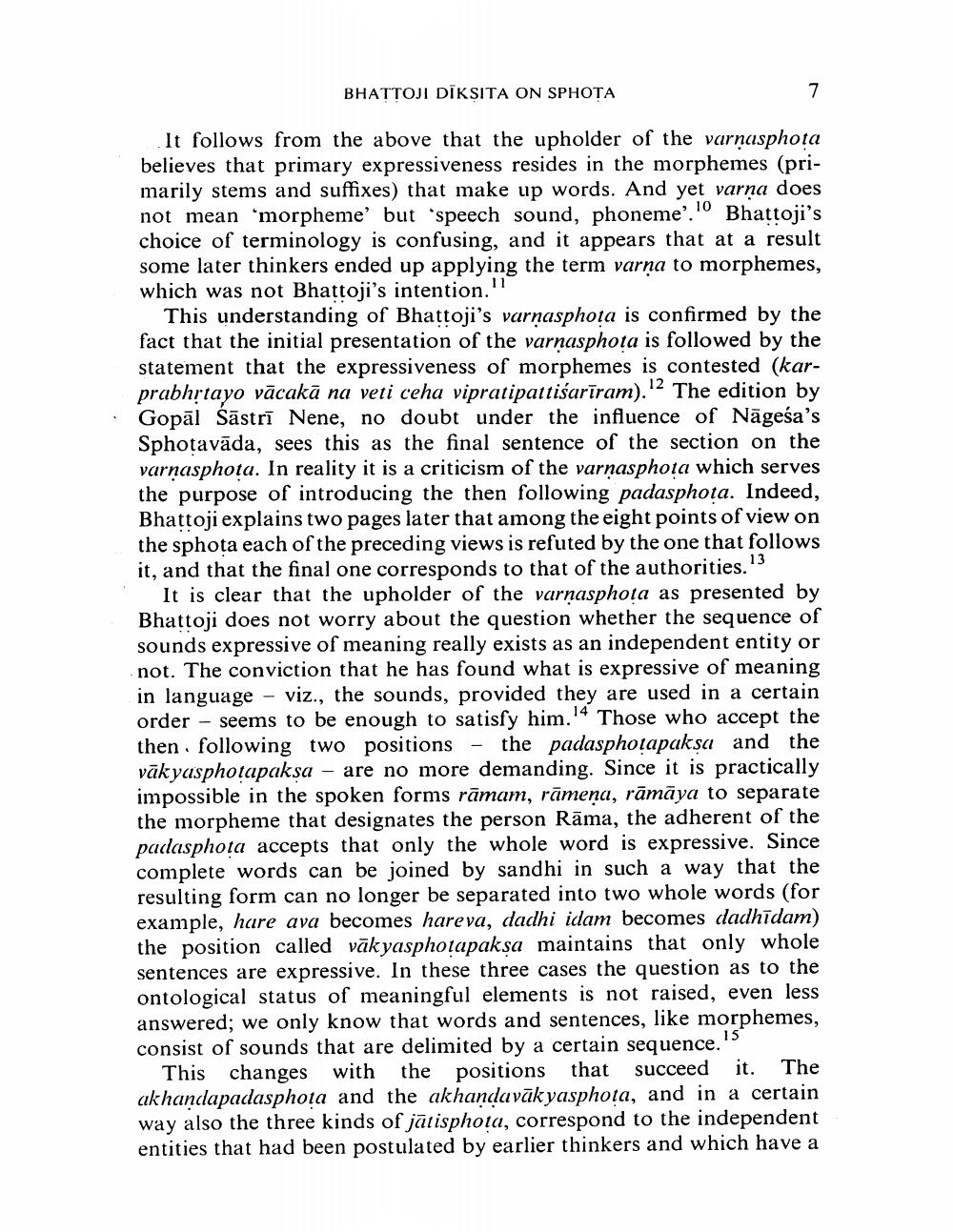Book Title: Bhattoji Diksita On Sphota Author(s): Johannes Bronkhorst Publisher: Johannes Bronkhorst View full book textPage 5
________________ BHATTOJI DIKSITA ON SPHOTA It follows from the above that the upholder of the varnasphota believes that primary expressiveness resides in the morphemes (primarily stems and suffixes) that make up words. And yet varna does not mean morpheme' but 'speech sound, phoneme'. 10 Bhattoji's choice of terminology is confusing, and it appears that at a result some later thinkers ended up applying the term varna to morphemes, which was not Bhattoji's intention." 11 This understanding of Bhattoji's varnasphota is confirmed by the fact that the initial presentation of the varnasphota is followed by the statement that the expressiveness of morphemes is contested (karprabhṛtayo vacakā na veti ceha vipratipattiśarīram). 12 The edition by Gopal Sastri Nene, no doubt under the influence of Nageśa's Sphoṭavāda, sees this as the final sentence of the section on the varnasphota. In reality it is a criticism of the varṇasphota which serves the purpose of introducing the then following padasphota. Indeed, Bhattoji explains two pages later that among the eight points of view on the sphota each of the preceding views is refuted by the one that follows it, and that the final one corresponds to that of the authorities. 13 7 4 It is clear that the upholder of the varnasphota as presented by Bhattoji does not worry about the question whether the sequence of sounds expressive of meaning really exists as an independent entity or not. The conviction that he has found what is expressive of meaning in language viz., the sounds, provided they are used in a certain order seems to be enough to satisfy him.14 Those who accept the then following two positions the padasphotapakṣa and the vakyasphoṭapakṣa - are no more demanding. Since it is practically impossible in the spoken forms rāmam, rāmeņa, rāmāya to separate the morpheme that designates the person Rāma, the adherent of the padasphota accepts that only the whole word is expressive. Since complete words can be joined by sandhi in such a way that the resulting form can no longer be separated into two whole words (for example, hare ava becomes hareva, dadhi idam becomes dadhīdam) the position called vakyasphotapakṣa maintains that only whole sentences are expressive. In these three cases the question as to the ontological status of meaningful elements is not raised, even less answered; we only know that words and sentences, like morphemes, consist of sounds that are delimited by a certain sequence. The This changes with the positions that succeed it. akhandapadasphota and the akhandavākyasphota, and in a certain way also the three kinds of jatisphota, correspond to the independent entities that had been postulated by earlier thinkers and which have aPage Navigation
1 ... 3 4 5 6 7 8 9 10 11 12 13 14 15 16 17 18 19 20 21 22 23 24 25 26 27 28 29 30 31 32 33 34 35 36 37 38 39
